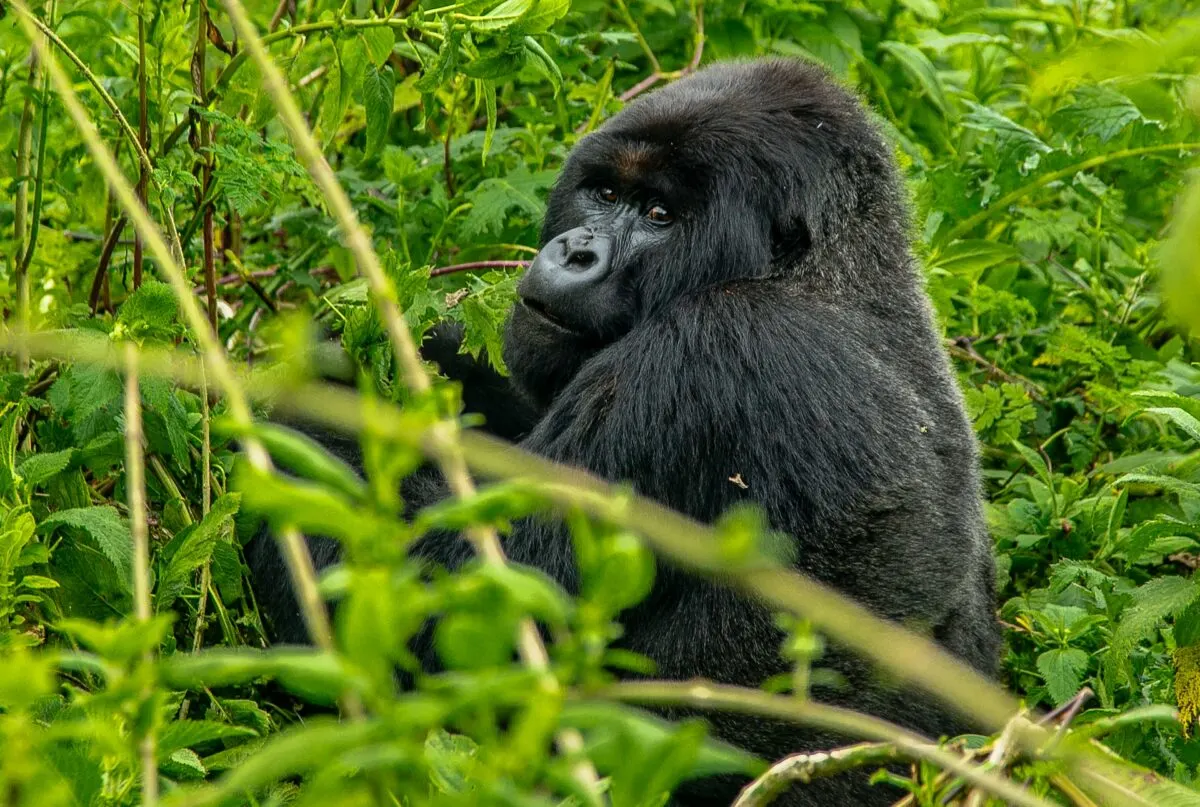What Sets Them Apart? – Gorillas vs. Elephants
Gorillas and elephants are two of the most iconic species of animals on our planet. Both are large and powerful, but their distinct differences set them apart.
Moreover, Gorillas tend to be more intelligent than elephants, while elephants possess a strength and size that the gorilla cannot match. In addition, gorillas live in tropical rainforests, while elephants prefer savanna grasslands.
Furthermore, gorillas use their hands for movement, whereas elephants use their trunks for mobility. These are just some differences between these incredible creatures, making them fascinating to observe and compare.

Want to jump ahead? Click below
Comparison Table
| Gorilla | Elephant | |
|---|---|---|
| Scientific name | Gorilla | Herbivorous, mostly fruit vegetation, such as leaves, stems, bark, and flowers. |
| Habitat | Tropical forests of Africa | Various parts of Africa, India, and Southeast Asia. |
| Size | Height: 5 to 6 feet tall Weight: 500 lbs | Height: Up to 13 ft Weight: Up to 14,000 lbs |
| Diet | Herbivorous, mostly fruit vegetation, such as leaves, stems, bark, and flowers | Herbivorous, mainly grasses, leaves, and bark |
| Endangered Status | Endangered, with a decreasing population due to habitat loss and hunting | Vulnerable, with a decreasing population due to habitat loss and poaching for ivory |
Physical Characteristics of Gorillas
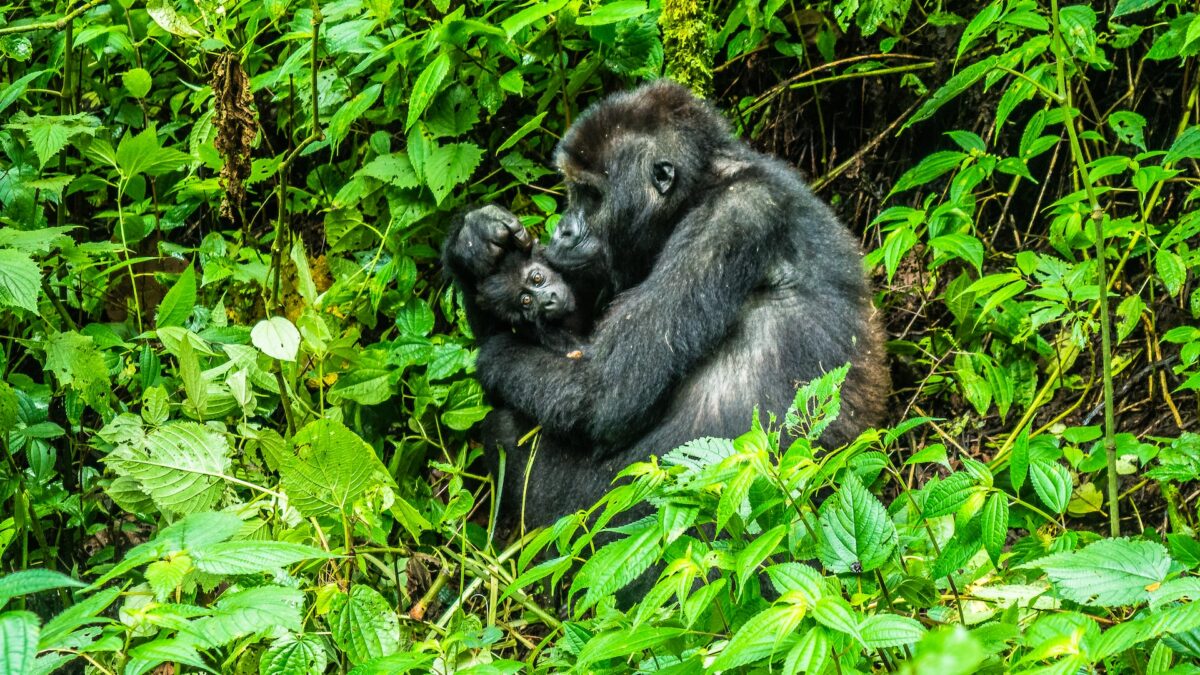
Body Structure and Appearance
Gorillas are large primates, with males typically standing between 5 to 6 feet tall when upright and weighing up to 500 pounds. They have thick black fur covering most of their body, except for their face and hands, which are usually gray.
However, Gorillas have long arms compared to their legs, which enables them to travel by knuckle-walking on all fours through the dense forest habitats they inhabit. Their heads are rounded with flat noses, small ears, tiny eyes, and expressive mouths, often showing the well-known ‘grin’ associated with gorillas.
Strength and Speed
Gorillas are potent animals – pound for pound; they can outperform even the most vital humans! They have powerful arm muscles which enable them to move quickly through dense vegetation and climb trees up to 10 meters high.
Despite this strength, gorillas aren’t particularly speedy animals; they tend to move very slowly on the ground at around one mph but can reach speeds of up to 18 mph when leaping through trees or running along branches.
Natural Habitat and Range
Gorillas live in tropical rainforests in central Africa, primarily in countries like Uganda, Rwanda, the Democratic Republic of Congo (DRC), parts of Cameroon, and the Central African Republic (CAR).
Depending on the species, they live in lowland forests or mountainous regions at altitudes between 6500 – 13000 feet. Gorillas prefer habitats with dense canopy coverage where they find food sources such as fruits, leaves, stems, and bark more easily.
Diet and Feeding Habits
Gorillas are primarily herbivorous animals that feed mainly on fruits but eat other vegetation, such as leaves, stems, bark, and flowers, if available seasonally.
They also occasionally consume small amounts of insects or other invertebrates as part of their diet, but these comprise only a tiny proportion of their calories (around 1%).
Adult gorillas spend an average of 8-10 hours daily feeding, while infants spend around 4-5 hours per day eating due to their smaller stomach capacity.
Physical Characteristics of Elephants
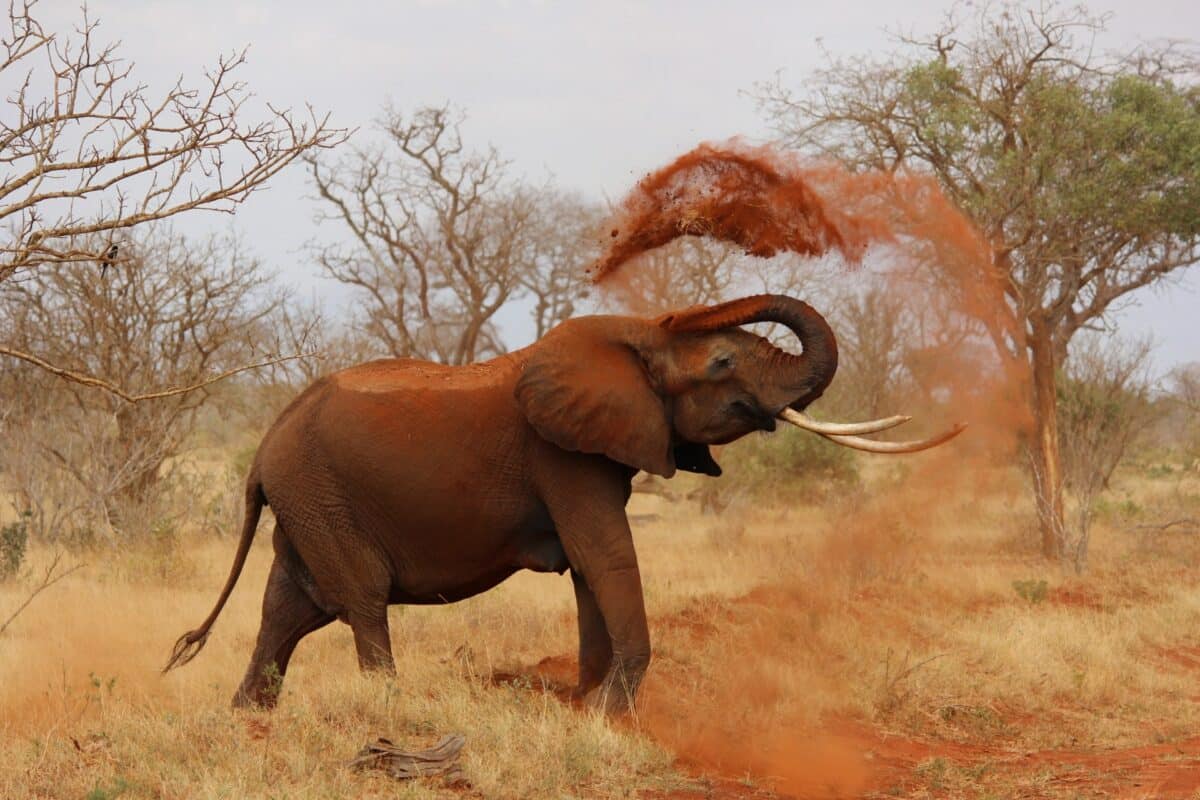
Body Structure and Appearance
The largest living land mammal, elephants are easily recognizable by their massive body structure and long trunk. Their thick skin helps protect them from the elements, while their large ears help regulate body temperature and keep the elephant cool.
Two-toed feet of elephants support their weighty bodies, while the curved tusks are used for defense, digging up roots, marking trees, and gathering food. Elephants can range in color from light gray to brown or nearly black, depending on their habitat.
Strength and Speed
Elephants are mighty animals capable of carrying up to 2,000 pounds over long distances at about ten mph. However, they can reach higher speeds of up to 25 mph for short bursts when necessary for escape or protection from predators.
They have tremendous strength – enough to knock down a tree with a single swing of its trunk – and can easily lift items several times their weight.
Natural Habitat and Range
Elephants are found in various parts of Africa, India, and Southeast Asia. They prefer habitats that include grasslands and forests because they need open space to roam while providing shade from the sun during hot days.
Typically, elephants live in matriarchal herds led by older female members who know migration routes and food sources best; larger packs may consist of tens or even hundreds of animals traveling together across vast distances throughout their range in search of food sources or mating opportunities.
Diet and Feeding Habits
Elephants are herbivorous animals whose diet consists mainly of grasses and leaves, bark, twigs, fruit, flowers, roots, and soil minerals for mineral supplementation.
An elephant may consume up to 150 kg (330 lbs) of vegetation per day; due to this large appetite, it may travel great distances daily in search of additional food sources as needed throughout its daily life cycle.
They also require significant amounts of water—up to 190 liters per day—to survive in the wild, so water sources must remain available wherever an elephant population exists.
Social Interaction Among Elephants in the Wild
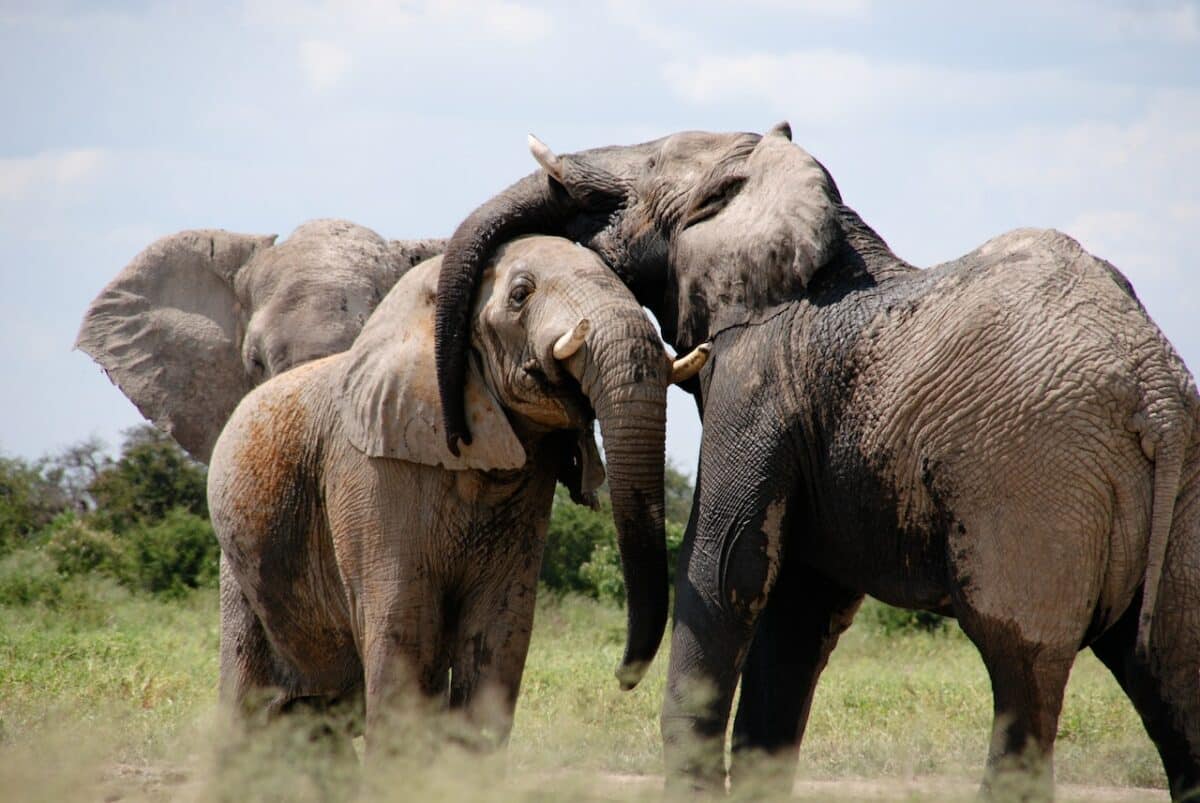
Elephant social behavior is complex yet fascinating; these animals possess potent bonds with each other within family units or herds which often stick together for safety purposes against predators such as lions or hyenas.
Also, elephants demonstrate incredible collaborative behavior towards one another during communication situations like mourning lost family members or alerting others to potential danger nearby.
Additionally, elephants can recognize familiar individuals within their herd after many years apart due to distinctive vocalizations shared between members, which indicate kinship.
Despite language barriers between different populations due to dialect changes, elephants maintain some level of relationship ties through physical contact like gentle touching or rubbing against one another, expressing comfort, solace, or bonding.
Behavioral Characteristics of Gorillas & Elephants
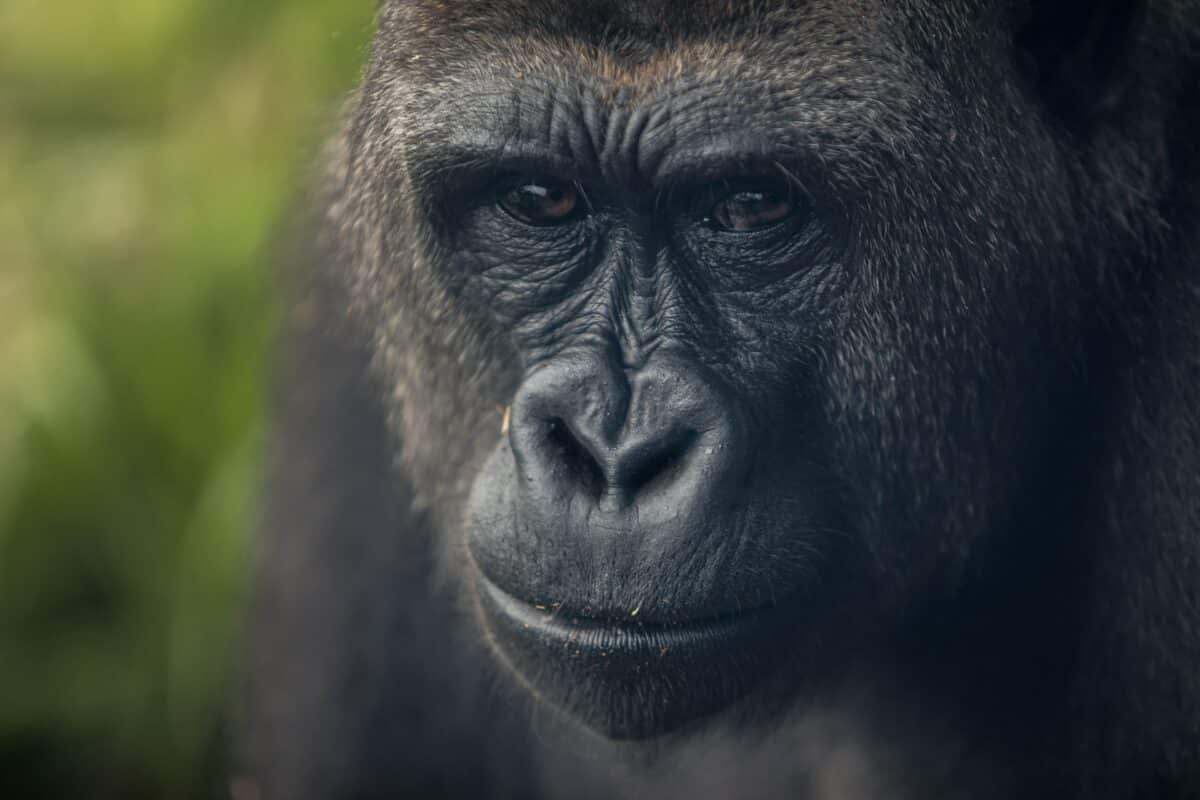
Gorillas and elephants are two species that share many similarities regarding their behavior and how they interact with their environment. Both animals show high cognitive capability and problem-solving skills. Gorillas have been observed using tools in various ways to obtain food or protect themselves from predators.
Elephants are similar in this regard as they use their trunks as extra limbs. This can be used to move objects around or open up fruit. Both animals also display complex forms of communication through visual signals and vocalizations – elephants often use their low-frequency rumbles to communicate over long distances.
Furthermore, both species show strong social organization; gorillas live in family clans led by a single dominant silverback male, while female elephants lead herds with their young calves.
Both species also engage in ritualized grooming behaviors such as touching one another’s faces or preening each other’s fur. Finally, both animals have different uses for space; gorillas tend to inhabit mountainous terrain, while elephants prefer savannas and grasslands where they can roam freely.
Conservation Efforts for Gorillas & Elephants
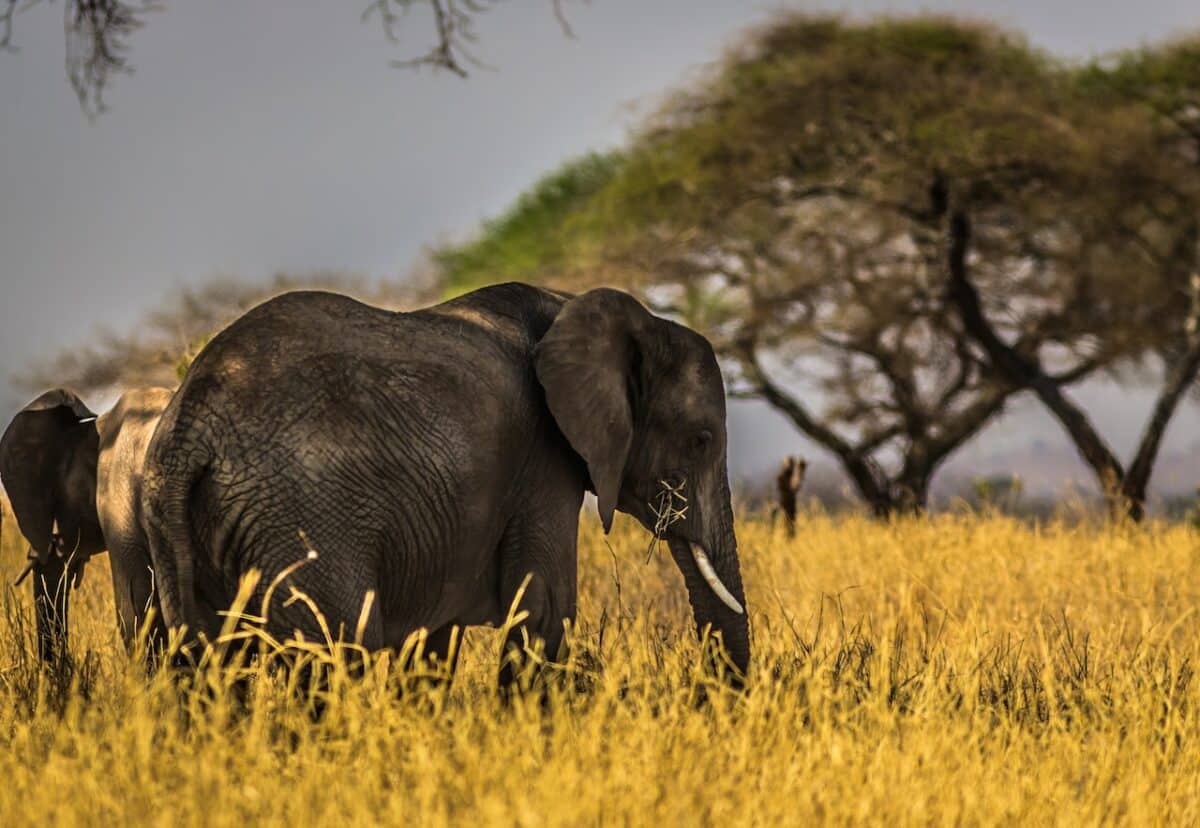
Both gorilla and elephant populations have been significantly reduced over time. This is due to human activity leading to habitat destruction and poaching. In response, conservation efforts have been put into place to protect these species from extinction.
International laws such as CITES (Convention on International Trade in Endangered Species) protect endangered animals worldwide. This is done by regulating the international trade of animal products such as ivory tusks or gorilla fur.
In addition, national parks set aside expressly for wildlife preservation allow these animals to live free from human interference. As well as provide food sources and safety from poachers who hunt them down for illegal trading purposes.
Education initiatives are also being rolled out across various African countries to inform local communities about preserving these iconic species. Furthermore, teaching them alternative ways to make a living without relying on hunting/poaching activities that threaten their survival.
Key Points
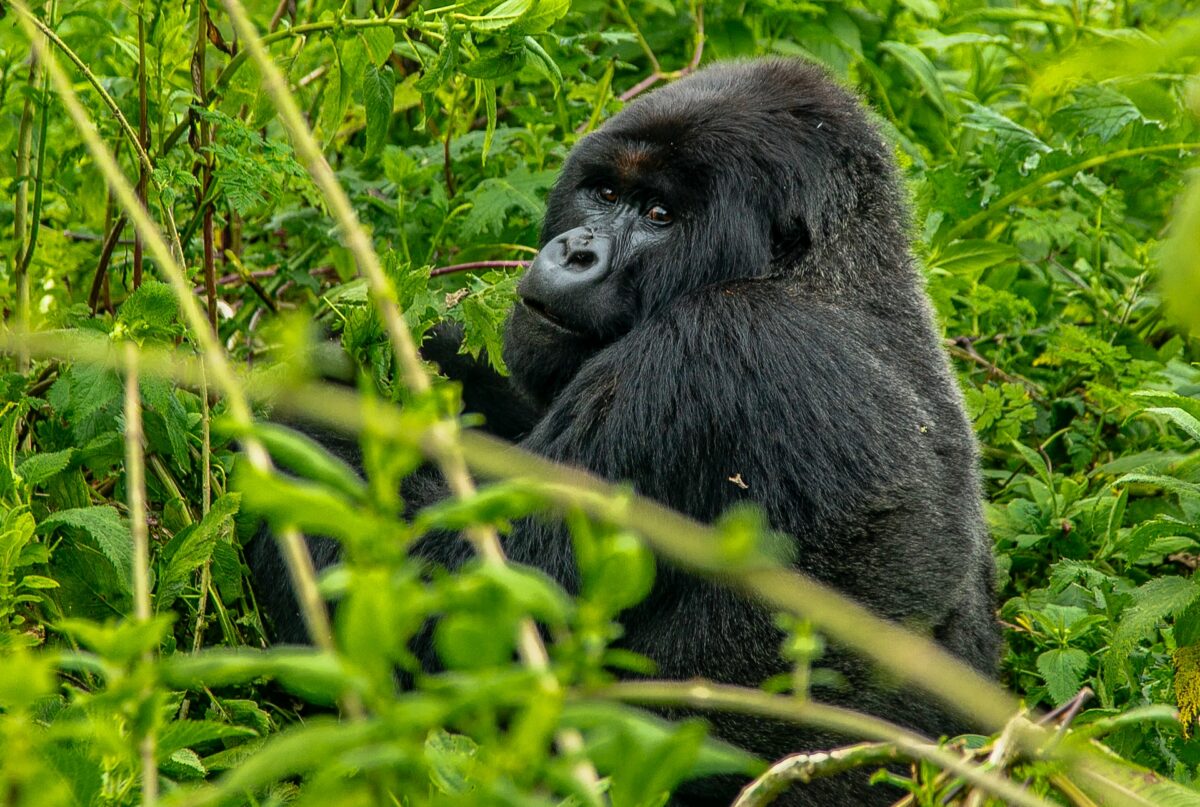
| Deforestation, hunting/poaching activities, and pollution have impacted gorillas and elephants worldwide. |
| Gorillas live in tropical rainforests, while elephants prefer savanna grasslands. |
| Gorillas are large primates, with males typically standing between 5 to 6 feet tall when upright and weighing up to 500 pounds. |
| Elephants are mighty animals capable of carrying up to 2,000 pounds over long distances at about ten mph. |
| Deforestation, hunting/poaching activities, and pollution has had an immense impact on gorillas and elephants worldwide. |
Wrapping Up with Gorilla vs. Elephant
It is clear that humans have had an immense impact on gorillas and elephants worldwide. Through deforestation, hunting/poaching activities, pollution, etc., our actions have caused irreparable damage to these species’ habitats. This is the reason why populations have drastically decreased over recent decades.
Thankfully conservation efforts are being implemented at various levels – from international laws providing legal protection against poaching/trade activities down to local education initiatives designed to raise awareness among rural communities living near gorilla/elephant habitats about the importance of preserving these majestic creatures for future generations.
By continuing our current efforts, we can ensure that gorillas and elephants survive long into the future – a legacy worth fighting for!
Thanks for following along with me! I hope you enjoyed reading about the pros and cons of these two jungle kings. Next up is Gorilla vs. Cobra, Gorilla Vs. Pitbull and Gorilla vs. Jaguar. Or why not see it in a battle against the tiger?
- Largest Western Hognose Snake Ever Recorded - April 17, 2024
- Watch The Record-Breaking Size of the World’s Largest Pitbull Ever - April 16, 2024
- Watch Hippo Mother Chases Crocodiles To Protect Her Dead Child - April 15, 2024

